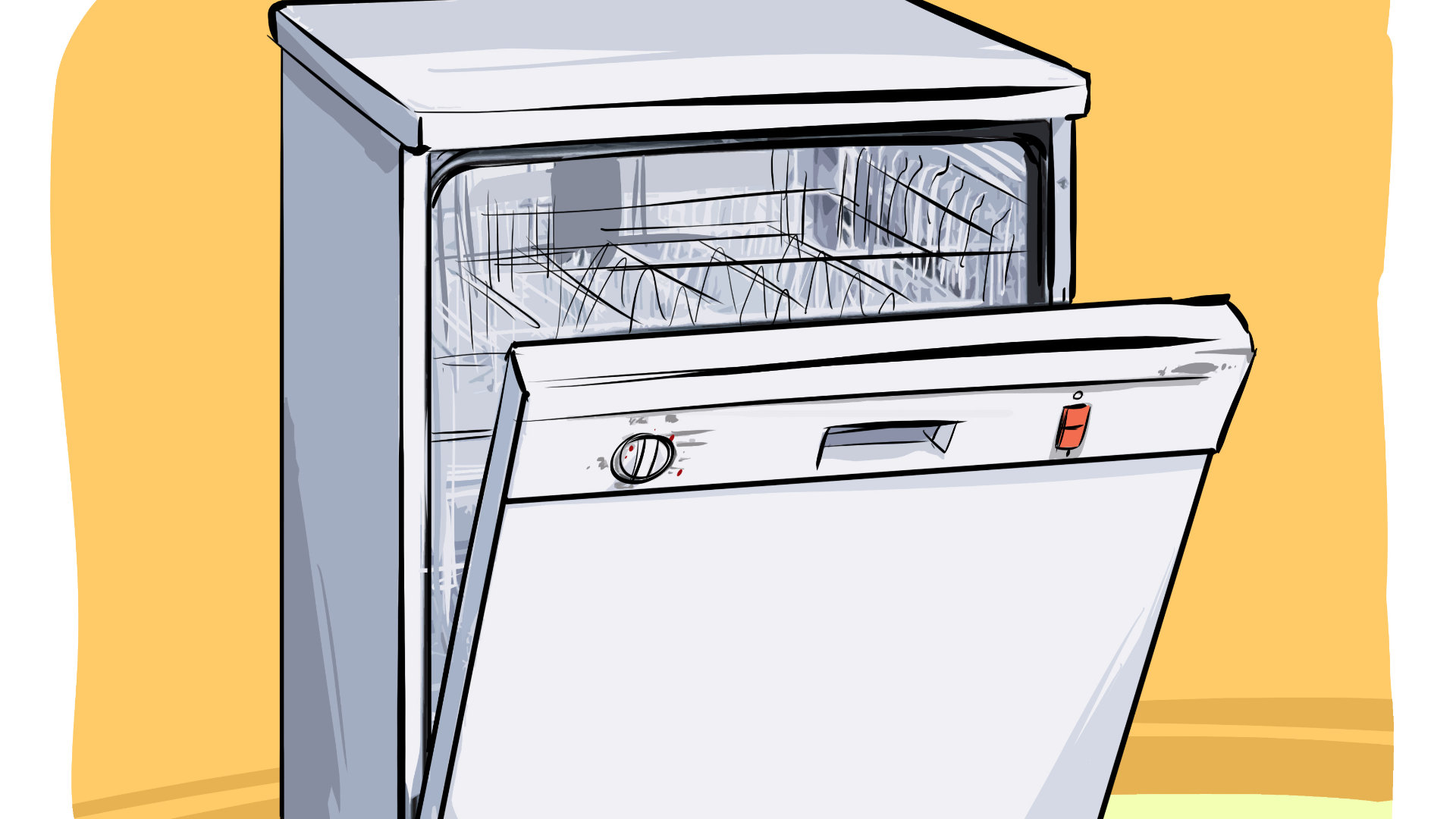
Is your dishwasher past its prime? Perhaps you even have a brand new dishwasher, all ready to install. In either case, you’ll need to remove the old dishwasher first. It might sound daunting—after all, there are electrical connections and water connections to consider, not to mention disposal. Don’t panic—our easy-to-follow guide walks you through all the necessary steps to removing and disposing of your old dishwasher. Read on to find out what to do.
Before you start
Before you begin, take a close look at your dishwasher to see if there are any specific considerations you’ll need to bear in mind. Look at the fixings and cabinetry surrounding your dishwasher to see if you’ll need any particular tools to remove it, then assemble your tools. In most cases, you’ll need the following items:
- Bucket
- Old towels
- Wrench
- Screwdriver
- Pliers
- Furniture dolly
Step 1: Turn off power and water
To begin, make sure your dishwasher is disconnected from both power and water. For the power, you can either unplug the dishwasher or flip the circuit breaker that corresponds with your dishwasher on the circuit board.
You can usually find a valve under the sink that controls the water supply to the dishwasher. Turn this off, or if necessary, turn off the entire water supply for your house.
Step 2: Remove the shelves
You’ll want your dishwasher to be totally empty before moving it, as otherwise the interior parts can move around and cause the door to swing open. Take out the top and bottom dish racks, as well as the cutlery holder.
Step 3: Disconnect the water supply line
This step can get messy, so make sure you’re prepared! There can be residual water in the line, even after you’ve turned off the water supply, so have towels and a bucket on hand in case of spills. Use an adjustable wrench to disconnect the water line, and make sure to clean up any water that spills out.
Step 4: Disconnect the drain hose
This step can also be messy, so keep those towels on hand! The drain hose is usually located at the back of the dishwasher, and the end will be placed in a downpipe or sink drain. Use pliers to remove the hose from where it connects to the dishwasher, making sure to dry up any water that leaks out from the connection.
Step 5: Remove any screws or mounting brackets
The next step will depend on how your kitchen is set up. In some cases, the dishwasher will not be fixed in place and you’ll just be able to slide it straight out. In other cases, it may be partially built into the cabinet, and held in place with brackets or screws.
Carefully inspect your dishwasher, then use a screwdriver to remove any screws holding it in place. These are usually located at the top of the dishwasher and fixed to the countertop above it. Once the screws and brackets have been removed, the dishwasher should move freely.
Step 6: Pull out the dishwasher
Now it’s time to pull out the dishwasher. You might need to enlist help for this step, as dishwashers can be pretty heavy. Once you’ve slid out the dishwasher, use a furniture dolly to move it away from the cavity where it was installed.
Make sure you’re careful of any sharp edges on the back of the dishwasher when moving it, and be aware that residual water may leak out when you tilt it. Have more old towels ready to quickly soak up any spills if necessary.
Step 7: Clean the space
No matter how diligent about cleaning you are, there’s bound to be a whole lot of dust and grime built up behind your dishwasher. This is the perfect time to deep clean the area, before installing your new appliance.
Use a soft cloth and a mild detergent to thoroughly wipe and clean away all dirt and grime. Then, let the area completely air dry before you put the new dishwasher in place.
After removal
Dispose of everything safely
Make sure you properly dispose of your old unwanted dishwasher. If it still works, and you’re just upgrading to a newer model, try selling your old appliance on eBay or Facebook Marketplace.
If it’s no longer working, contact your local waste disposal center and find out if your old dishwasher can be recycled. In some cases, you’ll be able to recycle it for a small fee.
Ensure your new dishwasher suits your needs
If you haven’t already chosen a new dishwasher, bear these things in mind when choosing your replacement:
- Size: Measure the cavity where your old dishwasher was, and ensure that any replacement will fit in the space.
- Capacity: Check how many dishes can be washed in the new dishwasher, and whether that suits the needs of your household.
- Efficiency: Check the Energy Star rating to ensure you can save on electricity and water.
- Noise: If quiet is important to you, check the decibel ratings to ensure you are buying a quiet model. Although quieter dishwashers tend to be more expensive, it’s worth it if you live in a small space.
- Features: If certain features are important to you, like drying performance, adjustable racks, or self-cleaning options, ensure that the dishwasher you choose has these features.
Customer reviews: check out consumer feedback on the models you’re considering to ensure that you choose something long-lasting with great performance.

Eliminate the Burning Smell From Your Microwave

Fixing a Samsung Freezer That Won’t Freeze

Whirlpool Oven Won’t Heat: Here’s What To Do

Easy Steps to Clean Your Refrigerator Coils

Quick Fixes for an LG Dryer Not Heating

How to Fix an Electrolux Dryer That’s Not Drying

Why Is Your Whirlpool Washer Lock Light Flashing?

Why Is Your Freezer Door Not Sealing?

How Does a Ventless Dryer Work?

